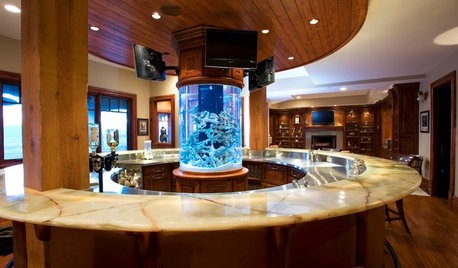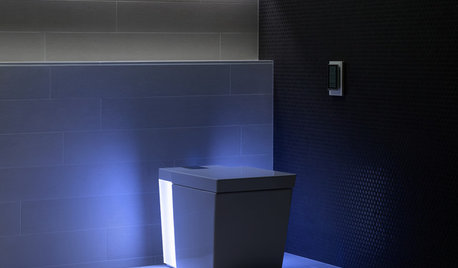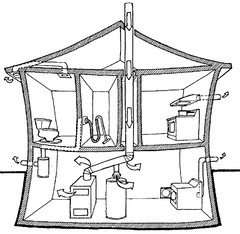80 gallon tank-type vs tankless water heater in new home
Pallavi
4 years ago
Featured Answer
Sort by:Oldest
Comments (119)
Springtime Builders
4 years agoElmer J Fudd
4 years agolast modified: 4 years agoRelated Discussions
Tankless water heater. Home Depot vs plumber
Comments (42)This post might be old but id like to respond. HI, Big Bias I'm seeing here... I would like to show some transparency so people know the actual costs. I would also like to note that i'm not including Markup to pay for things such as both types of insurance working and worker, Municipal licencing, Over head for a shop, Gas and insurance for a vehicle, the time it takes to order products as well as picking up/ delivering products. Expect a mark up of 26-37% on everything to pay for these items. If it's a Small one man company out of their home figure on the low end. If it's the largest plumbing company in the district expect to pay more. On the flip side they may get a bigger discount on the unit and hide that mark up in the unit it's self. My location is Alberta Canada, So keep in mind CND$$$. A typical 40-50Gallon Natural Draft hot water tank is 36-50k BTU's . A Rheem or Renai or Navian tankless is typically 140-205K BTU's . The Tankless will need a larger gas line. Usually needing permits. In my Jurisdiction The inspector gives a 4 hour window for inspection. So you'll be paying for a plumber for 4 hours. On top of that Tankless units DO NOT use the same venting as a Natural draft old style water tank. Thus a Venting inspection by the same inspector. Permit needed. So you will be changing two Major components of your homes "gas" and "venting" systems. Typical install time is about 4-6 hours. This includes, Turning off the water supply, Draining the house and tank, Unhooking the venting, Unhooking the old water supply. Then Mounting the new unit to a wall or Optional Metal rack carrier, Running new water supply lines complete with new valves and possibly a new Humidifier valve if the old one was above the hot water tank. Once the new lines are run, then they can Cap the old Vent. In some Jurisdictions this vent may be removed all together with a general contractor removing and capping the roof. Again more permits needed in this case. After the old venting is capped. then running new venting out of the side of the house. which has to be 12" from other venting or 3' from any opening door window or gas meter. If it's an older home you'll need to hire a Coring contractor to Core a hole through the Cement foundation. If the home uses TGI joists you can typically exit through there. Once the venting is complete the contractor can move on to the gas line. Cutting gas to the home for up to a couple hours Hopefully using "lock out tag out procedure" IE locking the riser while they work. They will open the outside of the gas line close to the meter Then Purge. Meaning to leave it open to air for 10 minutes. Some companies use a manual pump from the inside to push the gas outside. Once purged properly the contractor can start to take the gas line apart to add a tee. Remember he was supposed to "Size the gas line" at the time of Estimate to make sure your home has a large enough line for the added BTU's If he doesn't show the inspector this Calculation he could instantly fail inspection even if he did a good job. Most contractors will install a hard Tee then run Flex CSST Gas line or "Gas Tite" similar product. Once the gas is hooked up they do another purge the other direction. removing air from the line from the outside in. once gas is at the fixture it's time for commissioning. another 20 or so minutes till he's done. In my Jurisdiction the venting materials are to be Gas 636 PVC piping minimum. In multi unit dwellings it will need to be a higher spec. Cost of venting materials depends on length but the average is about $210 2" Double that for 3". Parts, correct type of glue Primer and glue. (the inspector checks), 2 45's 4 90's , 2 couplings, TY, 4 lengths of pipe. Seems rare to have an up and out easy unit. but costs obviously for that $60 or so depending on elbows needed. Gas permit $212.65 Materials gas $85.00 15' CSST, CSST adaptors, Nipples, Black 1 1/4 x 3/4 tee, Tape, jet lube, Materials Venting $210 4" B-vent Cap, 636 pvc piping & elbows Optional Rack $310 1/2" Plywood and screws $32.00 6 hours labour $510 Inspection time say we're lucky and only wait 2 hours $170 Owner supplied Tankless install 1219.65 Navian NPE-240A Wholesaler price $3044.22 Including Service kit. Some companies may get a higher discount through volume. Navian NPE-240A Amazon price 2800.00 No service kit https://www.amazon.ca/Navien-NPE-240A-Premium-Condensing-Tankless/dp/B00FAMAB2U/ref=pd_lpo_sbs_60_t_0?_encoding=UTF8&psc=1&refRID=P40Z2FYMVNSYE4DJ1A24 Also don't be fooled when it says 1/2" gas line the actual fitting is 3/4" it's just saying they have a special valve inside that allows for lower gas flow but in turn the burner does not run at full capacity. Total Canadian Dollars $4263.87 Transparent Fair pricing...See MoreTankless vs tank water heater
Comments (3)We are on natural gas but have installed tankless in our last two homes. Both times we switched to tankless to make more room (tanked w/h were in laundry rooms and we wanted to put in shelves). In our previous home we installed it under the house and in our new house we installed it on the exterior wall. Water never gets cold even with several appliances running (dishwasher, shower, etc). Only be aware that you will have to wait for the hot water to reach your appliance depending on the distance between the tankless and the appliance (similar to a tanked w/h really). If given the choice I'll always go tankless! You also have no more worries that the tanked w/h might burst....See MoreValue of 96% HE 75gal water heater vs. 80% standard 75gal water heater
Comments (11)Those numbers are definitely gas. $2800 seems like a lot. Longevity is of course variable and paying more probably gets you greater longevity. I haven't looked in a while but Marathon sold ones that significantly outlasted average ones. The first question is what is your fuel? NG is cheap and Propane is not (well it is relatively cheap now but more variable). Next is - not sure where you heard that tankless is not good. I have my issues with tankless but they should be considered. I have one in a new rental townhome and the water takes a long time to get hot. That is an issue but doesn't have to be. Some of that is plumbing but some is the nature of tankless. But in general tankless is the goto for many. It is a lot cheaper than $2800 and gives you 96% typically. Third question is why not use electricity? Heat pump hot water heater makes sense in a lot of environments. But you need to have the room and sound isolation. Lastly, there is some value still for solar hot water if you are concerned about being a good steward for the environment. Best if you don't have room for heat pump hot water. It also will outlast a heat pump. We paid about $7k but got $5k in incentives so it was a minimal cost to us for a good 80 gal tank with install. When considering the options, I always think it is good to remember that gas can not be created in a renewable fashion but electricity can. Also many electric utilities offer rebates for highly efficient electric devices. Many would be surprised but there is a growing return to electric resistance type hot water heaters for this reason. Particularly POU devices that eliminate the wait (and waste) of distributing hot water. I am still trying to figure out Duke Energy's incentives but I think we may be going back to solar if the incentives are still there....See More80-gallon 2004 water heater tank +solar. Replace pump, heater or both?
Comments (7)Hi @venexiano, I'm sorry I wasn't more clear. First let me say that I am making an assumption that your current setup only supplies domestic hot water and doesn't provide any space heating. I'm also assuming there aren't energy codes in your area that would dictate something different. If you want to do the most cost effective thing over the next 12 months with minimum investment. Replace the pump. The pump itself is $280+ tax and shipping. Having a plumber do it for $500 is reasonable. It would pay for itself in 5 months. Your 17 year old water tank will probably last at least 5 months that would break-even on the pump replacement. This is the lowest cost option, with a clearly defined break-even of 5 months. Do this. If you are looking to the future (what do I do when the 17 yo tank heater goes out?) Re-evaluate the entire setup with an eye on a hybrid electric heat pump water heater. These water heaters are not inexpensive to buy - but would cost less than replacing the existing tank heater with a unit similar to what you have now. (The existing unit is designed for solar storage - which adds to the cost). Hybrid electric water heaters have one of the lowest operating costs of any water heater - particularly when there's plenty of ambient heat to pull from. If you replace the existing tank with a hybrid electric heat pump heater then you could probably decommission the solar at that time. This would eliminate the small holding tank at the top, the pump, and the panels on the roof as a point of failure - dramatically simplifying things, future maintenance and costs. You seem to have an ideal setup for a hybrid electric water heater. A 50 gal heater would probably be just fine for a family of 4, but if you use a lot of hot water, a larger one could save you more in operating costs. If you go this route I would decommission the solar in stages: 1. Leave the panels in place but remove the top tank and pump. 2. Remove the roof panels when it makes sense. If you are looking to reduce energy usage / carbon footprint / etc. (You said this is not the case) Install the larger water heater to avoid it switching to electric resistance heat. Add PV solar when it makes sense. The new water heater will play nice with that setup....See MoreJake The Wonderdog
4 years agolast modified: 4 years agothinkdesignlive
4 years agomike_home
4 years agoJake The Wonderdog
4 years agoElmer J Fudd
4 years agolast modified: 4 years agoSpringtime Builders
4 years agolast modified: 4 years agoElmer J Fudd
4 years agolast modified: 4 years agoSpringtime Builders
4 years agolast modified: 4 years agoarmoured
4 years agoBT
4 years agoJake The Wonderdog
4 years agolast modified: 4 years agoSpringtime Builders
4 years agolast modified: 4 years agoElmer J Fudd
4 years agolast modified: 4 years agoCharles Ross Homes
4 years agoarmoured
4 years agoElmer J Fudd
4 years agolast modified: 4 years agoSpringtime Builders
4 years agolast modified: 4 years agoCharles Ross Homes
4 years agoSpringtime Builders
4 years agolast modified: 4 years agoCharles Ross Homes
4 years agoBT
4 years agoDavid Cary
4 years agoSpringtime Builders
4 years agoarmoured
4 years agoUser
4 years agoElmer J Fudd
4 years agoarmoured
4 years agoElmer J Fudd
4 years agolast modified: 4 years agoBT
4 years agolast modified: 4 years agoDavid Cary
4 years agoBT
4 years agoarmoured
4 years agoSpringtime Builders
4 years agolast modified: 4 years agoJake The Wonderdog
4 years agolast modified: 4 years agoCharles Ross Homes
4 years agoSam Biller
4 years agolast modified: 4 years agoSpringtime Builders
4 years agolast modified: 4 years agoSpringtime Builders
4 years agolast modified: 4 years agoCharles Ross Homes
4 years agolast modified: 4 years agoSam Biller
4 years agoElmer J Fudd
4 years agoElmer J Fudd
4 years agoarmoured
4 years agolast modified: 4 years agoDavid Cary
4 years agoSam Biller
4 years agoElmer J Fudd
4 years agolast modified: 4 years agoJake The Wonderdog
4 years agolast modified: 4 years agoSpringtime Builders
4 years agolast modified: 4 years ago
Related Stories

GREAT HOME PROJECTSHow to Switch to a Tankless Water Heater
New project for a new year: Swap your conventional heater for an energy-saving model — and don’t be fooled by misinformation
Full Story
GREAT HOME PROJECTSHow to Add a Solar Water Heater
Lower energy bills without a major renovation by putting the sun to work heating your home’s water
Full Story
SAVING WATER11 Ways to Save Water at Home
Whether you live in a drought-stricken area or just want to help preserve a precious resource, here are things you can do to use less water
Full Story
GREEN DECORATINGEasy Green: Big and Small Ways to Be More Water-Wise at Home
These 20 tips can help us all make the best use of a precious resource. How do you save water in summer?
Full Story
BATHROOM DESIGNDreaming of a Spa Tub at Home? Read This Pro Advice First
Before you float away on visions of jets and bubbles and the steamiest water around, consider these very real spa tub issues
Full Story
DECORATING GUIDESDesigning Nemo: 30 Fish Tanks Make a Decorative Splash
Bring an otherworldly glow and a calming vibe to your home with the living art of an aquarium
Full Story
BATHROOM DESIGNWater Damage Spawns a Space-Saving Bathroom Remodel
A game of inches saved this small New York City bathroom from becoming too cramped and limited
Full Story
BATHROOM DESIGNStraight Flush: The Future of Toilets in the Home
Night lights, seat warmers and temperature-controlled bidets are here — and that’s just the beginning
Full Story
GREEN BUILDINGWater Sense for Big Savings
Keep dollars in your pocket and preserve a precious resource with these easy DIY strategies
Full Story
GREAT HOME PROJECTS25 Great Home Projects and What They Cost
Get the closet of your dreams, add a secret doorway and more. Learn the ins and outs of projects that will make your home better
Full Story



User